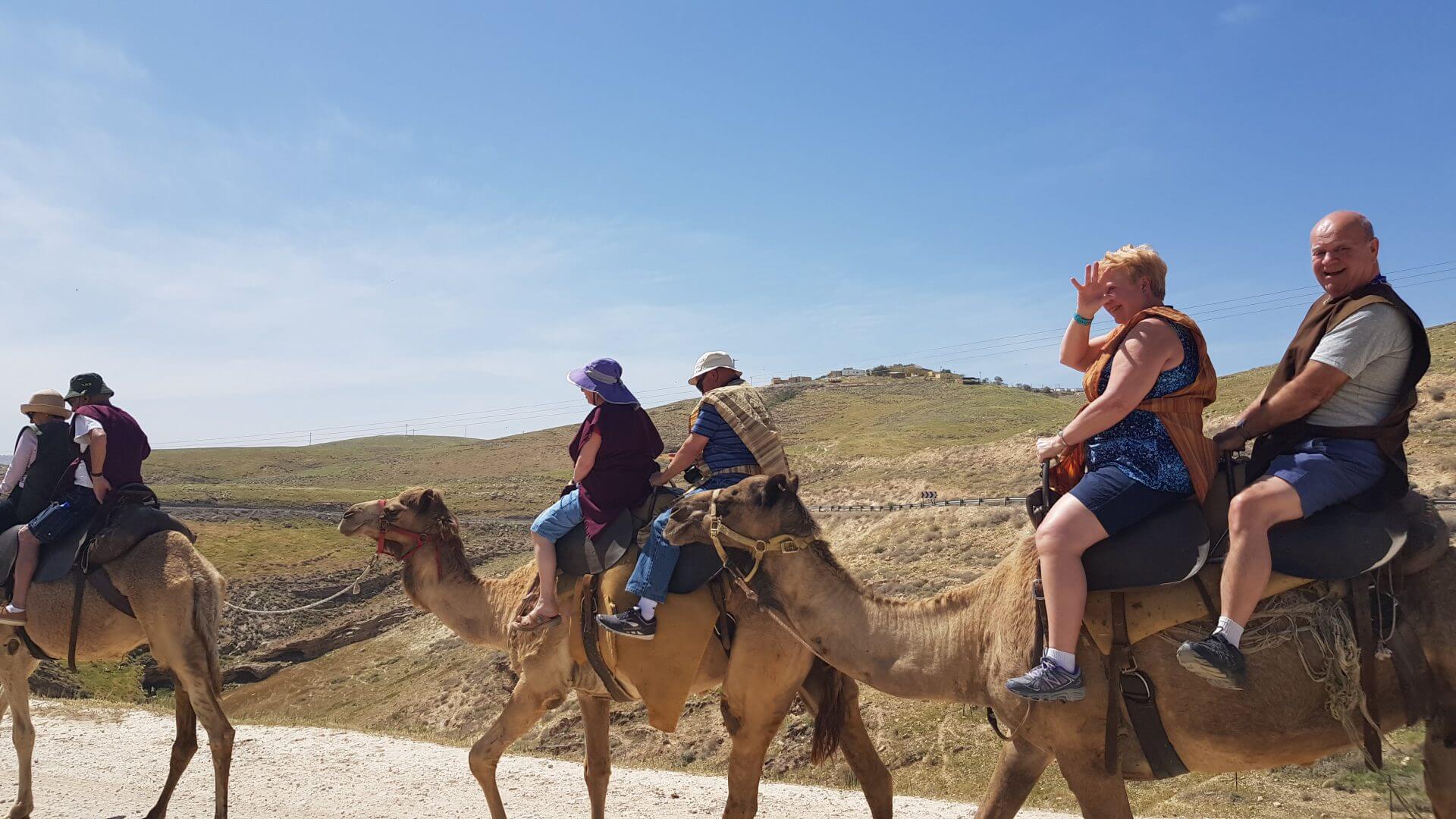Places to go for senior trip: Planning the perfect getaway for seasoned travelers requires careful consideration of accessibility, budget, and desired activities. This guide explores popular destinations worldwide, offering insights into budgeting, senior-friendly accommodations, health and safety precautions, and the choice between group and independent travel. Whether you envision a relaxing beach vacation, a culturally enriching European adventure, or an exciting exploration of Asia, we’ll help you navigate the process and create unforgettable memories.
From meticulously crafted itineraries to tips on capturing those cherished moments, this comprehensive resource aims to empower seniors to embark on the adventure of a lifetime. We delve into practical aspects like travel insurance, accessible transportation, and pre-trip health checks, ensuring a smooth and enjoyable experience. Discover the best destinations, tailor your budget, and plan your dream senior trip with confidence.
Accessibility and Senior-Friendly Accommodations: Places To Go For Senior Trip
Planning a senior trip requires careful consideration of accessibility to ensure a comfortable and enjoyable experience for all participants. Choosing destinations and accommodations that prioritize accessibility is crucial for a successful and memorable trip. Factors such as ease of movement, appropriate amenities, and accessible transportation are key elements in creating a positive travel experience for seniors.
Key Features of Senior-Friendly Hotels and Resorts, Places to go for senior trip
Selecting accommodations with features designed for seniors’ needs significantly enhances their comfort and independence during the trip. The following features should be prioritized when booking.
Browse the implementation of aarp senior travel tours in real-world situations to understand its applications.
- Accessible Rooms: Rooms should feature roll-in showers or walk-in tubs, grab bars in bathrooms, and wider doorways for wheelchair access. Many hotels offer rooms specifically designed for accessibility, often featuring adjustable beds and other adaptive equipment.
- Elevators: The presence of well-maintained and spacious elevators is essential for seniors with mobility limitations. Adequate elevator capacity is crucial, especially in larger hotels.
- On-Site Amenities: Senior-friendly hotels often provide convenient amenities such as accessible restaurants, pools with ramps or lifts, and easily navigable common areas. Proximity to these amenities minimizes the need for extensive travel within the facility.
- Emergency Assistance Systems: The availability of emergency call buttons in bathrooms and bedrooms offers peace of mind and ensures quick assistance in case of falls or other emergencies. This is a crucial safety feature.
- Well-Lit and Clearly Marked Areas: Adequate lighting throughout the hotel, along with clear signage and wayfinding systems, helps seniors navigate the premises easily and safely, reducing the risk of falls or disorientation.
Accessible Transportation Options at Popular Senior Trip Destinations
Transportation plays a vital role in ensuring accessibility for seniors. Many popular destinations offer a variety of options catering to diverse mobility needs.Examples of accessible transportation options include:
- Wheelchair-Accessible Taxis and Ride-Sharing Services: Many taxi companies and ride-sharing services now offer wheelchair-accessible vehicles. It’s advisable to book in advance to ensure availability.
- Public Transportation with Accessibility Features: Many cities offer public transportation systems with accessible buses and trains, featuring ramps, lifts, and designated wheelchair spaces. However, accessibility varies depending on the city and the specific route.
- Accessible Rental Cars: Rental car companies provide vehicles equipped with hand controls or other adaptive driving devices for individuals with disabilities. Reservations should be made well in advance.
- Shuttle Services: Many hotels and resorts offer shuttle services to and from airports or other attractions. Inquire about the accessibility features of these shuttles before booking.
- Accessible Tours and Excursions: Several tour operators specialize in providing accessible tours and excursions, using wheelchair-accessible vehicles and offering modified itineraries to accommodate various needs. It’s crucial to check accessibility details before booking.
Considering Accessibility Needs When Choosing Activities and Excursions
Selecting activities and excursions with accessibility in mind is critical for ensuring all participants can fully enjoy the trip. This includes considering the physical demands of the activity, the availability of accessible routes, and the provision of necessary support. For example, choosing walking tours with paved paths and minimal inclines, or opting for boat tours with accessible boarding ramps, are crucial considerations.
Prior research and communication with tour operators regarding accessibility are essential.
Health and Safety Considerations for Senior Travelers

Planning a senior trip, whether domestic or international, requires careful consideration of health and safety. The goal is to ensure a memorable and enjoyable experience without compromising well-being. Proactive planning and adherence to safety protocols are paramount for a successful and worry-free journey.
Pre-Trip and On-Trip Health and Safety Precautions
A comprehensive approach to health and safety encompasses both preparation before the trip and precautions during the journey. Failing to adequately address both aspects can lead to avoidable complications. The following checklist Artikels essential steps for senior travelers:
| Pre-Trip Preparations | On-Trip Precautions |
|---|---|
| Consult your physician for a thorough health check-up and discuss any necessary vaccinations or medications. Obtain any required prescriptions in advance, ensuring you have a sufficient supply for the entire trip, plus extra for unforeseen delays. Pack a comprehensive first-aid kit including any personal medications. Make copies of all important documents, including medical records, insurance information, and passport. Inform your bank and phone provider of your travel dates and destinations to avoid any service interruptions. | Stay hydrated by drinking plenty of water, especially in hot climates. Be mindful of food safety and avoid consuming uncooked or undercooked foods. Maintain regular medication schedules. Carry a copy of your itinerary and emergency contact information. Be aware of your surroundings and avoid walking alone at night or in poorly lit areas. Utilize reputable transportation services. Seek immediate medical attention if you experience any health issues. Communicate regularly with family or friends back home. |
Importance of Consulting a Doctor Before Travel
Consulting a physician before embarking on a senior trip is crucial, especially for individuals with pre-existing health conditions such as heart disease, diabetes, or respiratory problems. A doctor can assess the traveler’s overall health, recommend necessary vaccinations and medications, and provide guidance on managing health conditions during travel. They can also advise on potential health risks associated with the destination and offer strategies for mitigating those risks.
For example, a senior with heart problems might need to discuss altitude adjustments or physical activity limitations with their physician before traveling to mountainous regions. This consultation helps prevent unexpected health emergencies and ensures a safer travel experience.
Obtaining Necessary Travel Documents and Visas
Securing the necessary travel documents and visas well in advance of the trip is vital for senior travelers. This process can be more complex for seniors due to potential health issues or limitations. For international travel, obtaining a passport that is valid for at least six months beyond the travel dates is essential. Visa requirements vary by country, so it is crucial to check the specific visa requirements for the destination country well in advance.
Applying for a visa can take time, and delays can occur, so it’s advisable to begin the application process several weeks or even months prior to the trip. Senior travelers may need to provide additional documentation, such as medical certificates or proof of sufficient funds, to support their visa application. Many countries have specific processes for senior citizens applying for visas, so researching and understanding these processes is crucial.
Capturing Memories
A senior trip is a momentous occasion, deserving of lasting memories. This section focuses on practical tips and techniques to ensure your trip is well-documented, whether you’re a seasoned photographer or a complete novice. We’ll explore methods for preserving these memories, both digitally and traditionally, allowing you to relive the experience for years to come and share it with loved ones.
Memorable Photo Techniques for Seniors
Capturing stunning photographs during your senior trip doesn’t require professional-level equipment or expertise. Simple techniques can dramatically improve your results. Consider using a camera with a good zoom lens to capture details from a distance, avoiding the need for extensive walking. Autofocus features on most modern cameras and smartphones make focusing easy, and using natural light will generally produce the best results.
For those with shaky hands, leaning against a stable surface or using a tripod can significantly reduce blurry images. Experiment with different angles and compositions – a slightly elevated viewpoint can often add interest to a scene.
Creating a Travel Journal or Scrapbook
A travel journal or scrapbook provides a tangible record of your trip, allowing you to add personal reflections and anecdotes alongside your photos. Start by purchasing a high-quality journal or scrapbook with sturdy pages that can accommodate photos and mementos. Include not only photographs but also ticket stubs, brochures, postcards, and small items that evoke memories. Jot down your daily experiences, highlighting memorable moments, funny anecdotes, and personal reflections.
Consider using decorative stickers, washi tape, and other embellishments to personalize your journal or scrapbook. Remember to date each entry, providing a chronological record of your journey. This tactile approach adds a unique dimension to preserving your memories beyond digital formats.
Sharing Travel Experiences with Family and Friends
Sharing your senior trip experiences with loved ones can strengthen bonds and extend the joy of your journey. Digital methods offer ease and efficiency. Create a photo album on a cloud-based platform like Google Photos or Flickr, allowing easy sharing with family and friends. Consider using slideshow software to create a visually engaging presentation, adding music and captions to enhance the narrative.
For a more traditional approach, consider printing your favorite photos and creating a physical photo album or sharing printed photos directly with family and friends. Alternatively, narrate your trip to family and friends in person, sharing stories and showing photos on a large screen or projector. This personalized approach fosters connection and ensures that your memories are not only preserved but also actively shared and celebrated.
Ultimately, the ideal senior trip hinges on personal preferences and priorities. Whether opting for the camaraderie of group travel or the freedom of independent exploration, meticulous planning and attention to detail are key to a successful and enriching journey. By carefully considering factors such as accessibility, budget, and health concerns, seniors can create lasting memories and embark on adventures that celebrate this exciting new chapter of life.
Remember to capture those precious moments, savor every experience, and return home with a heart full of joy and a collection of stories to share.


